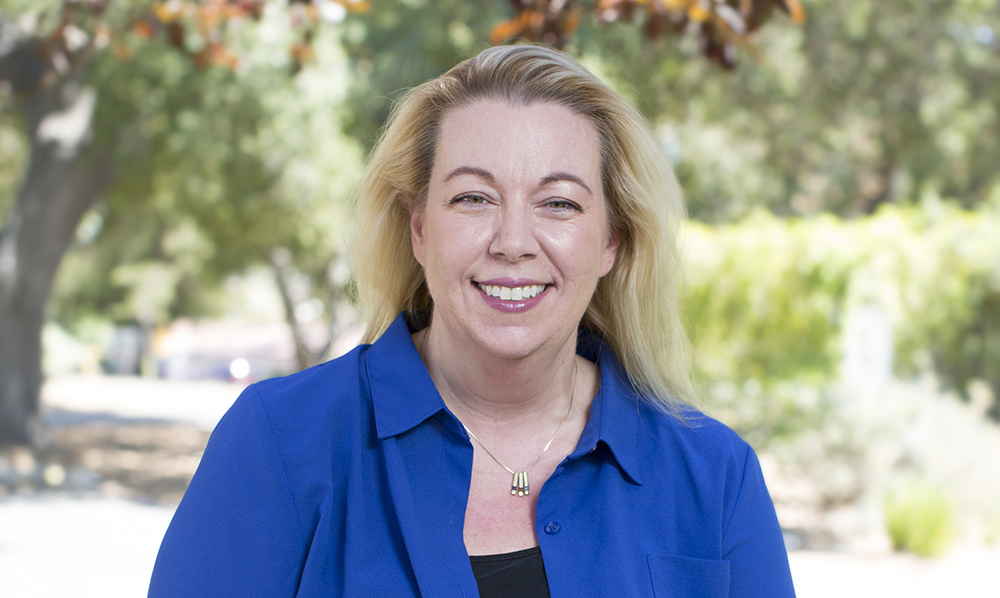Researchers Employ Mathematical Modeling to Study Tumor-immune Dynamics
February 3, 2020
A collaboration between Lisette de Pillis, Norman F. Sprague Jr. Professor of Life Sciences and Professor of Mathematics at Harvey Mudd College, and international colleagues in mathematics and in experimental biology has culminated in the publication of “Mesenchymal stem cells (MSCs) used as carrier cells of oncolytic adenovirus results in enhanced oncolytic virotherapy” in Nature.
The collaboration began in 2015, when de Pillis’s work with mathematical modeling of immune dynamics and interaction with tumor growth led her to present at an American Institute of Mathematics workshop on tumor-immune dynamics.
“At this workshop, our core group of collaborators began brainstorming about how we might better understand some of the challenges involved with delivering oncolytic virus (OV) to a tumor site,” de Pillis says. “The team was multinational and multidisciplinary—bioengineers and mathematicians based in the U.K., South Africa, South Korea and the U.S. working together.”
De Pillis and her colleagues constructed a mathematical model to help them understand under what conditions mesenchymal stem cell-oncolytic viral (MSC-OV) therapy can be effective. Current research is investigating MSCs loaded with oncolytic viruses as a new method of treating advanced/metastatic tumors and enhancement of virotherapy. “To address the critical question of how MSCs loaded with oncolytic viruses affect virotherapy outcomes and tumor growth patterns in a tumor microenvironment, we developed and analyzed an integrated mathematical-experimental model,” de Pillis says.
MSC-OV therapy design must take into account the behaviors both of the MSCs and the OVs, de Pillis explains. “OVs have the ability to target and attack cancer cells in a way that does not damage healthy cells. The kind of virus our collaborators are experimenting with is an oncolytic adenovirus, which is a genetically modified virus that was approved in China in 2005 for the treatment of head and neck cancer. OVs are able not only to destroy tumor cells, but are also able to stimulate an anti-tumor immune response. The immune stimulation can be both beneficial (extra tumor-killing activity) and precisely the thing that stops the OV therapy from being able to work. Why? Once injected into the individual—because the OV does stimulate an immune response—that very response often ends up clearing out the virus before it ever makes it to the tumor site. So we need a way to ferry the virus to the tumor site and to protect the virus until it can reach its goal.”
There’s an ongoing debate as to the usefulness of MSCs, de Pillis says, because they have the potential either to promote or to suppress tumor growth. However, because they are cells that have the ability to travel directly to tumor sites, they are potentially very useful vehicles for delivering anti-cancer agents effectively. “We can deliver the OV by loading it into an MSC: the MSC acts as the boat that ferries the virus to its destination, and potentially protects the virus from immune attack on the journey.”
The mathematical model developed in this research can help to quantitatively predict the consequences of using MSCs for delivering the OV within an individual. “The model revealed a surprising and counter-intuitive result: Using tumor-promoting MSCs to carry the oncolytic virus to the target (the tumor cells) is not only beneficial, but necessary if we are to control tumor growth,” de Pillis says. “This model outcome has also been confirmed through laboratory experiments.”
De Pillis and her colleagues expect to continue working together and are discussing what they want to focus on next. “We have been working on aspects of this problem for a few years now, and we are all very excited that this last publication was accepted to Nature,” de Pillis says. “New discoveries in cancer immunology and treatments are continually being made, and there are so many rich areas where mathematical modeling can yield surprising and helpful insights.”
Further reading: There are currently several clinical trials underway evaluating MSCs as delivery vehicles. See, for example: Mesenchymal Stem Cells (MSC) for Ovarian Cancer; Genetically Modified Mesenchymal Stem Cell Therapeutic Against Head and Neck Cancer. Another recent paper delves more deeply into the biological and clinical side of the challenges with oncolytic virotherapy.
